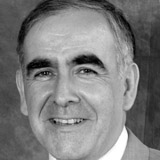 One of the great challenges of hospital medicine is retaining a sense of the marvel of ageing after a busy night on general take. The sheer complexity of the frail, multimorbid, and delirious nonagenarian can easily rattle junior trainees. Seeing beyond the losses to the accumulated richness of life experiences demands insight, but can be teased out by powerful metaphors.
One of the great challenges of hospital medicine is retaining a sense of the marvel of ageing after a busy night on general take. The sheer complexity of the frail, multimorbid, and delirious nonagenarian can easily rattle junior trainees. Seeing beyond the losses to the accumulated richness of life experiences demands insight, but can be teased out by powerful metaphors.
When teaching students and trainees, I often lean on late life creativity in the face of disability: Matisse in his wheelchair, Renoir with the paintbrush strapped to his arthritic hands, Klee and his scleroderma.
A different parallel struck me recently at the combined German, Austrian, and Swiss congress of gerontology and geriatric medicine in Halle, a modest-seeming city in former East Germany.
The congress was excellent, starting on a high note with an overview of telomeres in health and ageing by Nobel laureate Elizabeth Blackburn. The magisterial perspective of her talk mirrored a lifetime’s development of work stretching over four decades, a gerontological perspective in its own right.
With 12 parallel sessions, and a remit from cell biology through sociology and psychology to healthcare, choice was (as ever) difficult. The differences between the health systems for older people in German speaking countries made for interesting comparisons.
It was also heartening to see progress in research: in my own area of driving and ageing, it became clear across several sessions that the scientific community is really embracing the research findings that older people are endangered, rather than dangerous, in the context of driving and traffic.
Equally fascinating to me was the slowly unfolding marvel of Halle and its history, a thought provoking backdrop. Even 25 years after reunification, a strong flavour of the former German Democratic Republic lingers in the buildings and streetscapes, lending a slight dourness to a cityscape made famous by Lyonel Feininger in a series of paintings in the 1930s.
The layers of history kept peeling back, starting with the uneven restoration and gaps in the city, which arise from the substantial damage caused by aerial bombing in World War II.
Compact in size, much can be seen in the city in a short period of time. The houses of both Handel and Wilhelm Friedrich Bach, eldest son of JS Bach, revealed Halle to have been a major centre of musical activity and literature in the baroque and classical period.
A particularly fine collection of expressionist art, especially from Die Brücke in nearby Dresden, is housed in the Moritzburg Castle.
My big surprise was how prominent the Thirty Years War remains in the texture of this castle and the town. Wonderful, often sardonic, etchings from the period featured on the walls of the gallery, and one huge window in the elegantly updated castle looks onto the absent West Tower, blown up in one of the sieges of Halle during the conflict.
The apogee of my time travel in Halle was an evening reception at the breathtaking State Museum of Prehistory, with a spectacular display of artefacts from the region, from the Palaeolithic period to the Bronze Age. A particular highlight is the Nebra sky disc from 1600 BC, the oldest representation of the cosmos known to man.
While the level of sophistication in the workmanship of many of the tools and implements is remarkable, equally notable is the universal quest for beauty, from the jewellery in the graves to the shapeliness of the axe heads. The need for aesthetic expression has clearly always been hardwired into humans, an issue under-recognized up to now in healthcare.
Now that I know more about the rich history of Halle, I can no longer see it as a small and fairly typical East German city. It is not so much steeped in history as bursting out with it. Through the connections of mind and spirit awoken by these encounters, I began to see its present with new eyes, the streetscapes taking on a new light.
If we could take this same prism to older people, and recognise the richness of both their past and present, then we might find ourselves moved to do better. Equally, we might learn a moral from the curatorial approach in Halle by joining our present with the treasures of past times.
The preservation, sensitive repair, and engaging public display of these artefacts required expertise, diligence, money, time, and—most important of all—purpose and will. These are also features of good gerontological care.
Developing this purpose and will in the public and political arena—to protect and nurture the longevity dividend—must be a key goal for advocacy by geriatricians and gerontologists everywhere.
Desmond (Des) O’Neill is a geriatrician and cultural gerontologist in Dublin. He is also the local lead for the IAGG-ER Congress in 2015.
